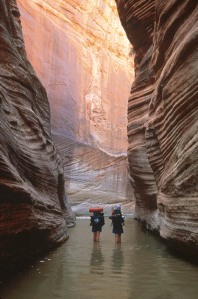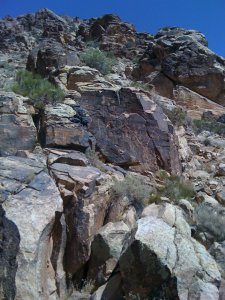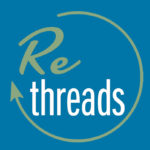So you’ll have to excuse the self-indulgent attempt below at waxing poetic about my recent (and only) summer travel. I’m no Rachel Carson or John Muir, but we just returned from Utah (a place near to my heart, having spent almost 20 years there before moving to Charlottesville 10 years ago) And I have to share!
Not many people know that Utah contains FIVE of the nation’s most beautiful national parks: Zion, Arches, Canyonlands, Bryce, Capitol Reef. My fondest memories of growing up there include biking Slick Rock in Moab, backpacking in the High Uintah mountains, and repelling 50 ft into the Narrows in Zion National Park. Nature beckons you to play there and it’s so accessible. Last year my girlfriend and I found ourselves at the base of pristine mountain lake within 15 minutes drive from the Salt Lake Valley. I believe people there may tend to take Mother Nature and her beauty for granted. I know I did.
This trip was for the Kent family reunion, so I wasn’t able to soak up as much as I would have liked the red rock desert solitude, hundreds of miles from any billboard or 7-11(don’t take that personally, family).
But we were able to squeeze in a tasty visit to Salt Lake City’s farmer’s market (above), a peaceful raft down the Provo river (minutes away from Robert Redford’s Sundance) – the picture above is Bridal Veil Falls, a hike at the base of Mount Timpanogos (not pictured), and a visit to see ancient petroglyphs at Parowan Gap (last picture above).
Did you know that Utah has more Native American petroglyphs and pictographs that any other state?
And I was lucky enough to visit one of the most prolific galleries concentrated in one area: Parowan Gap. When I stared upon these rocks and looked beyond them at the horizon of desert sagebrush, I felt gratitude for being there: a witness to another being’s tool for communication from centuries ago. And I longed to know more about what they were telling us. The meaning of the petroglyphs isn’t fully understood – tribes, archaelogists, historians have different stories to tell. Some (the sheep) are more clear than others (stryations forming a zipperlike shape).
For me, the only certainty I left with was how connected ancient peoples were to the land. And a taste for how I can help our community be even hungrier for connection to our planet.
I thought about all of the quick and easy ways we can connect and communicate in today’s world – cell phones, internet, blogs, email, FB. But to what end? Late night you tube surfing, internet shopping, quipping and out-clevering on facebook?
I’m not trying to pass judgement here. I do all of these things too. But I ask you this admist all of our quick ways we can connect to others today: How “well-connected” are you? Do you include a favorite tree, butterflies, other friends of the natural world? (The first tree I would “friend” on my FB is that amazing magnolia between Park and Rio Road!)
I like Terry Tempest Williams’ wider lens: “I believe our path toward the future is as it has always been – a people in a place with a commitment to community. Staying put. Slowing down. Listening. Learning… the names of our neighbors. Which she includes the pronghorn antelope, sego lily…” If we are to live in better balance and harmony, we must include the plants, trees, animals, rivers. And “friend” them in ways that go beyond this e-venue.
In-love-of-East-and-West,
BWB










Comments on this entry are closed.